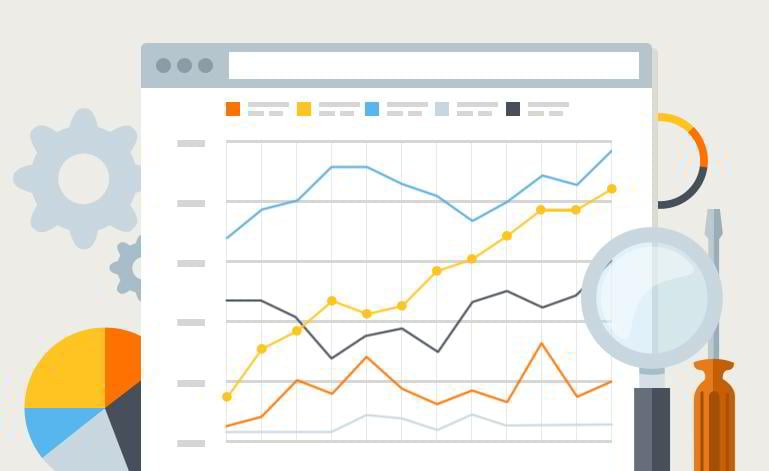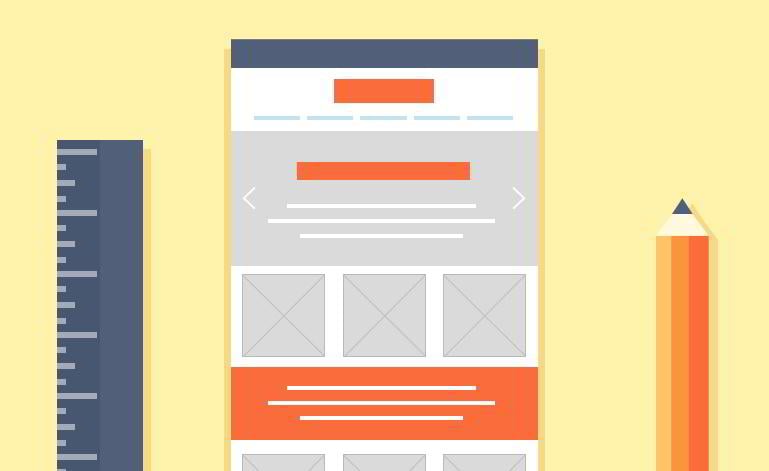Your First Website Launch Checklist
The “Publish” button feels like the “Eat Me” Cake for Alice from Wonderland. But wait a minute before following the white rabbit down the rabbit hole. No matter how tempting the button might seem, you still have tons of stuff to check before launching your website.
Startup Hub has got its “story of shame”, too. 3 days after the launch our Google Analytics showed 0 traffic, though we worked as hard as possible. What went wrong? We were about to come up with another conspiracy theory, when discovered we didn’t add the tag of Google Analytics to our website. Those tiny details, huh?
You don’t want to fail — especially when you’re launching your website. This is why we’ve created this ultimate “7 days and 1 minute” checklist. Feel free to learn from the mistakes everybody else has already made.
“7 days and 1 minute” checklist:
7 days before the launch
3 days before the launch
1 day before the launch
1 hour before the launch
1 minute before the launch
7 days before the launch
SEO
Check all of your keywords, think like a customer, be your customer. You can launch a website, but who will see it? How will your audience find your website? To answer these questions, we will start with SEO — the area of tags and keywords:
- Add a unique title tag for each web page (not more than 60 characters). Make sure it includes at least one keyword from this page. Basically the pattern should look like this — “Target (main) Keyword - Additional Keyword | Your Business Name”.
- Add meta descriptions (not more than 156 characters) to all web pages. It should include at least one keyword from the page and be unique and fresh.
- All of your images should have ALT tags — the general description of what is shown on them. ALT tags allow search engines bots to “see” the pictures from your website, too, and attract users.
- Check the URLs of each page and make sure they include the target keywords from the page.
- Check the texts on every page of your website. Do they all have at least one target keyword and some additional ones? Do these keywords look natural in the texts?
- Set up Google Webmaster Tools to see if search engines understand your website properly.
- Make sure you’ve created and added an XML sitemap — a file with all pages you have — to help search engines understand the structure of your website better. If not, you can create one with SiteMap Generator. As soon as you’ve generated the file, add it to the root directory and also to your WebMaster Tool Account.
Site speed
According to surveys, 47% of users expect a web page to load in 2 seconds or less. Of course, if it bothers customers, it also bothers search engines. It is as simple as that: to win the souls of your users and the coded hearts of Google, you have to work on the site speed.
- Test your site speed. For example, Google PageSpeed Insights analyzes the speed, then gives you the list of the weaknesses. Besides, WebPageTest provides you with the exact loading time for the first and the repeat visits. If you manage to keep your loading time under 3 seconds, everything is great. Under 7 is still okay, but try to improve it. If your site takes more than 10 seconds to load, you have a problem.
- Make sure you’ve enabled caching. As a rule, it goes with your hosting provider, but you can also add it locally or with the help of plugins. For example, we recommend WP Total Cache for WordPress and JotCache for Joomla.
- Check out the sizes of your pictures. 150 kB is around maximum you'll need to make your website quick and still beautiful. If yours are bigger, cut or compress them with any graphics editor (from Paint to PhotoShop and back) or make machines do the work — use Kraken (image compressor and optimizer). Also, make sure the pictures are in JPEG or PNG formats.
- Take a look at your website’s database and get rid of all the junk (you can already have some even at this point) — auto-saved copies, drafts, redundant plugins.
- Install Google PageSpeed for some automatic speed optimization.
Security
Hackers and spamming bots are waiting at every corner, but it’s in your power to secure the basic and the most vulnerable stuff on your website:
- Ask your hosting provider if they have an option of SFTP (Secure File Transfer Protocol) instead of the usual FTP. If so, it will enable a safer way to upload the needed files to your website by encrypting them.
- If you’re going to sell something from your website, ensure the security of payments. To encrypt the connections between a web server and your customer’s browser, you can use SSL certificates — the feature is available as a paid service from multiple providers.
- Did you take care of anti-spam protection? Check if the forms on your website have validation fields. The more secure way is to add captcha (for example with Google reCAPTCHA).
3 days before the launch
Content
This might seem like an obvious one, but put yourself together and look through all your content thoroughly:
- Check your spelling and grammar. I know you’ve seen this recommendation everywhere by now. But believe me, you don’t want to read users’ pointing out your mistakes in comments. Don’t forget about inverted commas, quotations, full stops and other tiny details.
- Be cool like Stephen King — reread your texts once again and get rid of all passive voice there.
- Make sure you have enough content for the first week — that would be the hottest time. The texts should consist of at least 300 words and be unique.
- Check the “contact us” section. It should really aim at contacting you and providing up-to-date information. Also, if you point your contact details somewhere else, make sure it coincides everywhere.
- Look through headlines, lists, paragraphs, charts and follow one genuine style in formatting from texts to texts.
- Review all pictures, videos and their copyrights. Provide links to your sources.
- Check the links in your texts (here should be no dead or redirected ones) with the help of Google Webmaster Tools.
Design
I’m sure you didn’t start working on your design 3 days before the launch (didn’t you?). At this point you probably have all design issues resolved. Still, there are a few tiny details you could overlook:
- Didn’t you miss the favicon? The devil’s in the details. Due to the small size of the picture needed for favicons, you’ll probably have to use special tools for creating those: Favicon Generator or Faviconer. It’s better to make a favicon in different sizes and upload them all onto your server, so that each particular browser could choose the needed size.
- Check how your website looks in different browsers and on different devices.
- Check if there’s a current year and a proper data specified in the footer of your website.
If you still didn't decide on your design, we have the biggest collection of website templates for you to choose from.
1 day before the launch
Analytics
Google Analytics is a must-have tool that provides you with everything you need to know about your audience. You will be able to analyze your audience’s behavior as soon as you make your site public. For now, make sure you have a Google Analytics account and figure out the basic settings:
- Sign in to Google Analytics.
- Add the URL of your website and choose the category that corresponds to it.
- Install the tracking code, exclude your own IP, setup goals, and on-site search. That’s the basic you can do at this point. But also read this manual, which will give you more insights on how to use Google Analytics for 100%.
Backups
Do you know that feeling when an important document’s disappeared accidently the night before the event and you have no copies? You don’t want to repeat this experience with your website, so make backups:
- Make a backup of your website’s final version, when it’s all done and done great. The texts, the extensions, all should have backups in case of emergency.
- Set up ongoing copies of the website regularly. The least you can do is make your server do this and, also, save everything into your dropbox.
1 hour before the launch
- You’re almost there, but as high-wire artists say, the last steps are the most dangerous. Now it’s time to brace yourself and check the texts for social media. Believe me, you don’t want to start your website with a typo in the launch tweet.
1 minute before the launch
- Now it’s time. Unpin the “nofollow”, take a deep breath and... press the “publish” button.
Your fate is sealed — you’re a website owner now. It won’t be easy but it’s worth it.
Brian Waters
Monstroid product lead and evangelizer, Brian is a very approachable and easy to work with. Started as a Tech Support Operator, he knows a thing or two about customer happiness. When not winning customer hearts and crafting the Monstroid Theme, Brian loves playing basketball and snowboarding.




